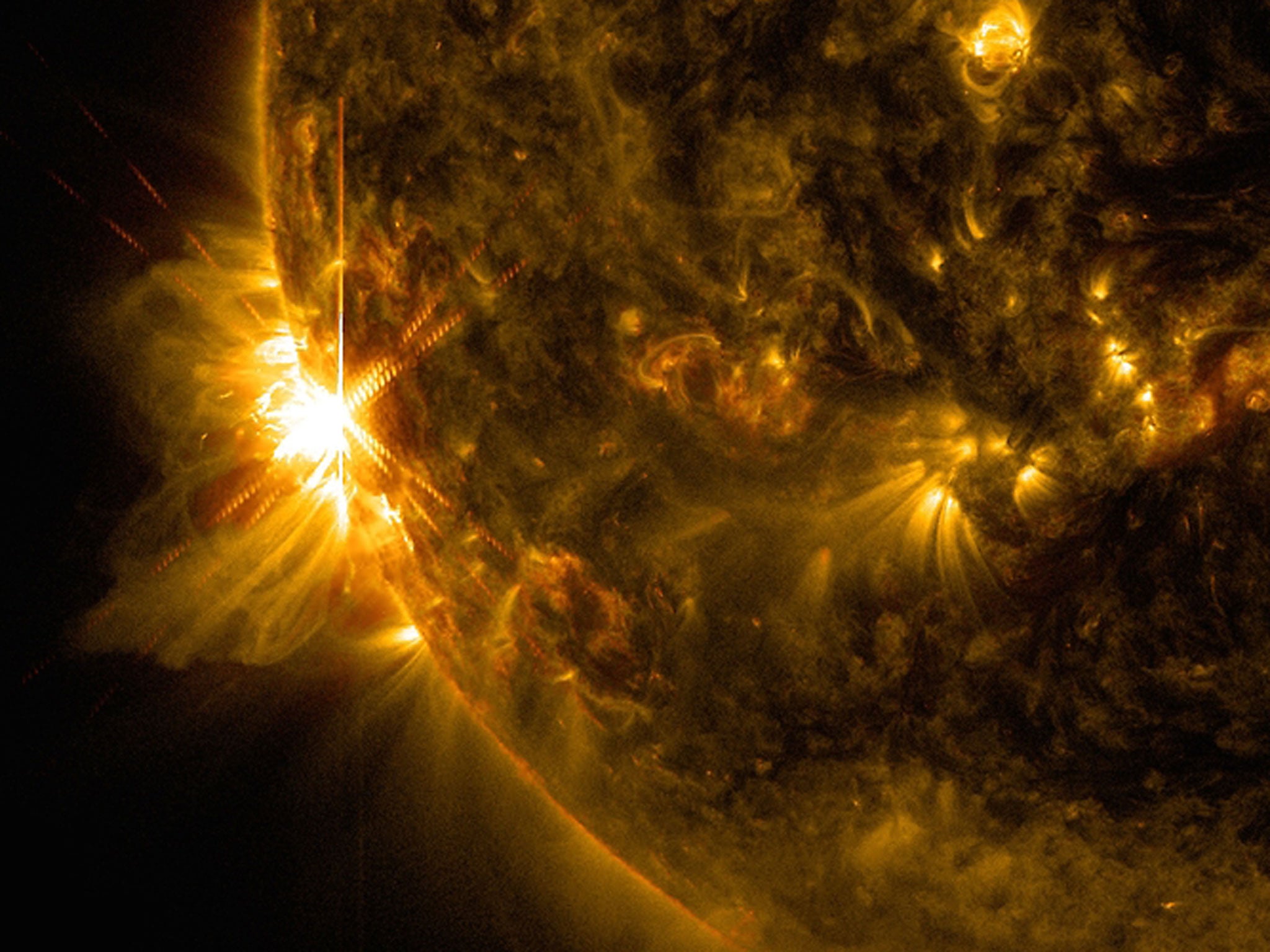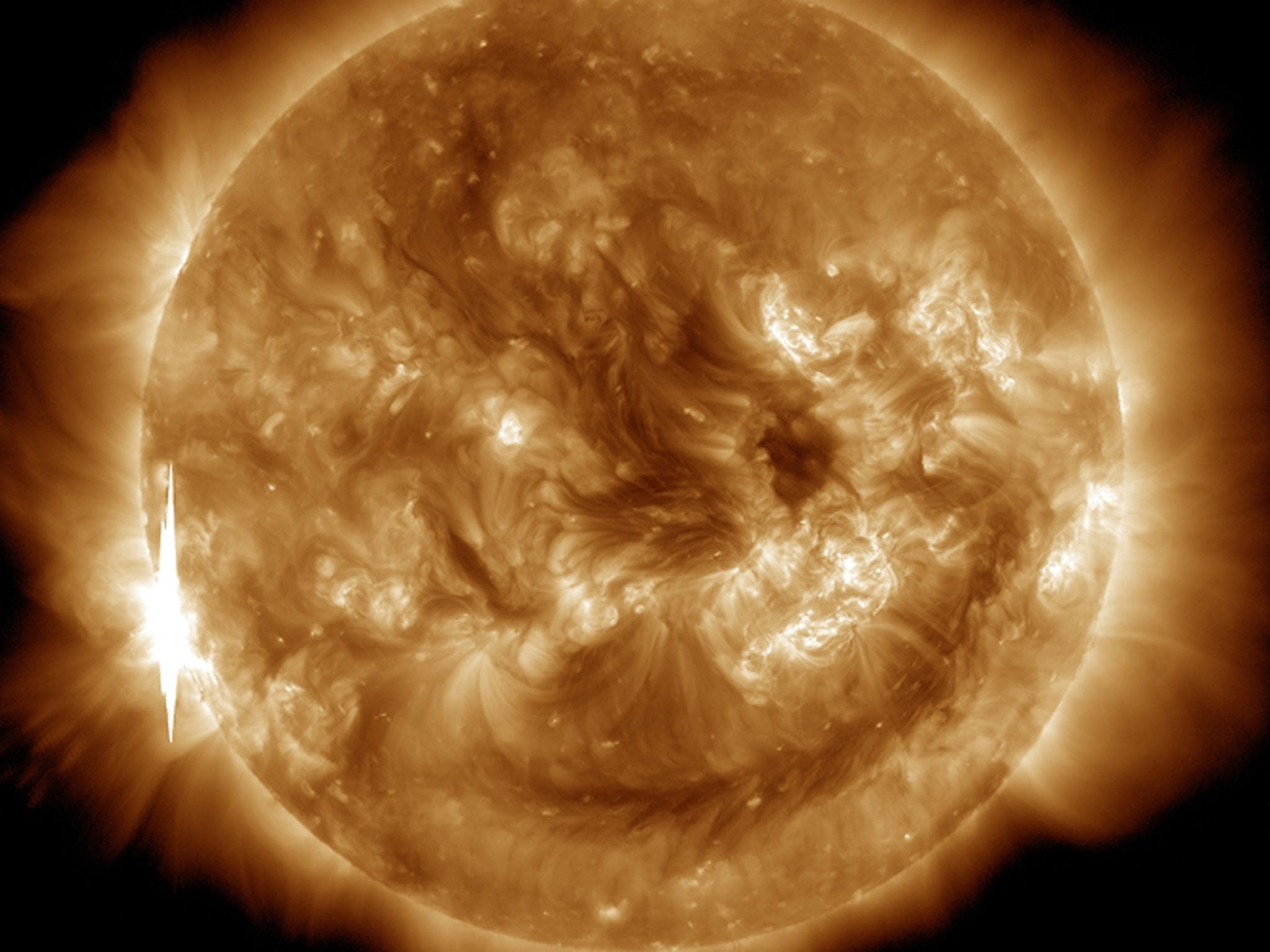Nasa captures powerful X-class solar flares emitted by the sun
The sun released an intense third flare on Wednesday morning

Your support helps us to tell the story
From reproductive rights to climate change to Big Tech, The Independent is on the ground when the story is developing. Whether it's investigating the financials of Elon Musk's pro-Trump PAC or producing our latest documentary, 'The A Word', which shines a light on the American women fighting for reproductive rights, we know how important it is to parse out the facts from the messaging.
At such a critical moment in US history, we need reporters on the ground. Your donation allows us to keep sending journalists to speak to both sides of the story.
The Independent is trusted by Americans across the entire political spectrum. And unlike many other quality news outlets, we choose not to lock Americans out of our reporting and analysis with paywalls. We believe quality journalism should be available to everyone, paid for by those who can afford it.
Your support makes all the difference.Nasa has captured dramatic images of the sun as it emitted three X-class solar flares, the second of which occurred just an hour after the first.
Nasa’s Solar Dynamics Observatory observed the sun as a significant solar flare burst from its left side, peaking at 7.42 am EDT on 10 June. The sun then released a second X-class flare which peaked just over an hour later at 8.52am.
The third, classified as an X1.0, erupted today and peaked at 5:06 a.m. EDT.
Nasa explains that solar flares are the most powerful bursts of radiation that cannot pass through Earth's atmosphere to physically affect humans on the ground.
However, the flares can disturb the Earth’s atmosphere in the layer where GPS and communications signals travel.

Tuesday's flares, which measured X2.2 and X1.5, were reportedly powerful enough to temporarily interfere with radio communications in Europe.
Dr Dan Brown, an astronomy expert at Nottingham Trent University, said the flares can create a radio blackout event classed as "R3" which are common during the sun's activity cycle.
Michael Lockwood, a Professor of Space Environment Physics at the University of Reading, said any interference would have been short-lived. He told The Independent: “You do get radio noise from solar flares and if you can see the actual flare then you will pick up radio noise. It can affect radar communications systems, but it is quite a brief pulse.
"More significant is if there is an associated coronal mass ejection (CME) - very large amounts of material being blown out of atmosphere into space. From the position of this, it won’t be directed towards us – they have to be much nearer to the centre of the visible disc of the sun to hit us."
The arrival of one of these CMEs would disrupt satellite communications, he explained, but this was not directed at Earth.
"We are talking about the effects purely on radio systems," he added.
The 'X' classification represents the most intense flares, and the number reflects how strong the flare is. For example, an X2 is twice as intense as an X1, and an X3 is three times as intense.
The X2.2 was not the strongest kind of X-ray flare encountered in our solar cycle, said Dr Brown. "This was the X5.4 rated flare in March 2012.”
Subscribe to Independent Premium to bookmark this article
Want to bookmark your favourite articles and stories to read or reference later? Start your Independent Premium subscription today.
Join our commenting forum
Join thought-provoking conversations, follow other Independent readers and see their replies
Comments